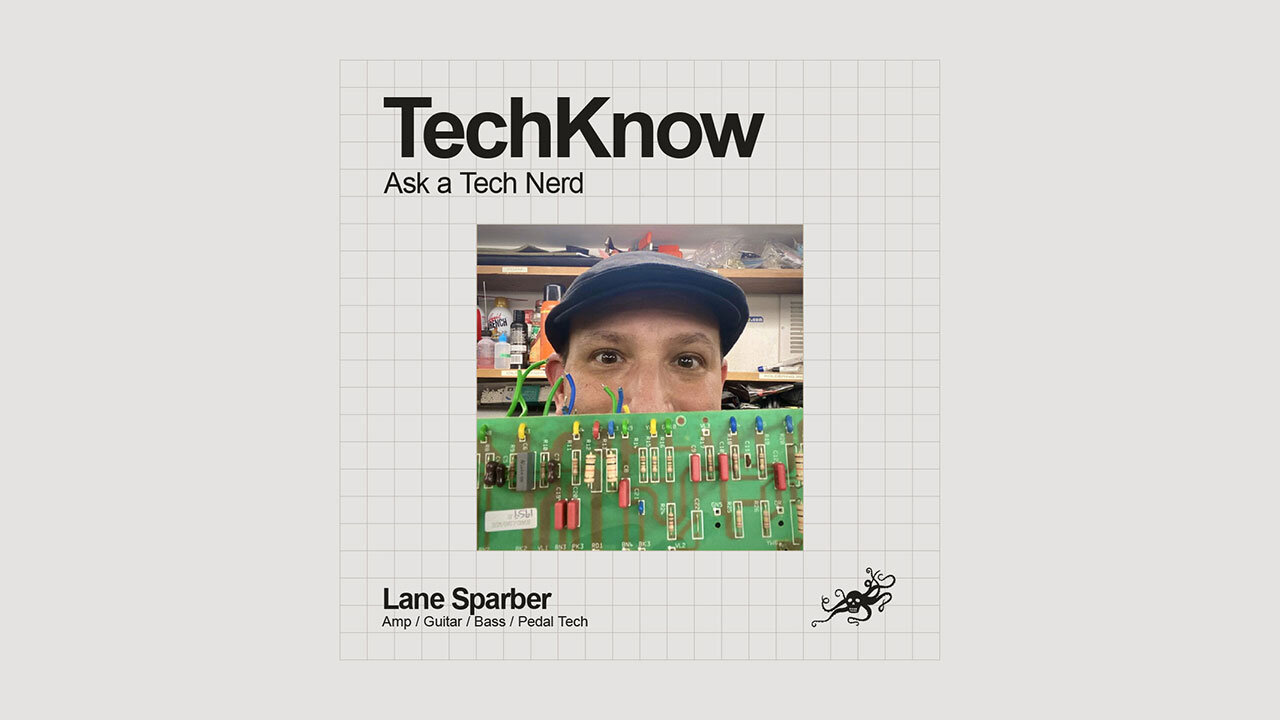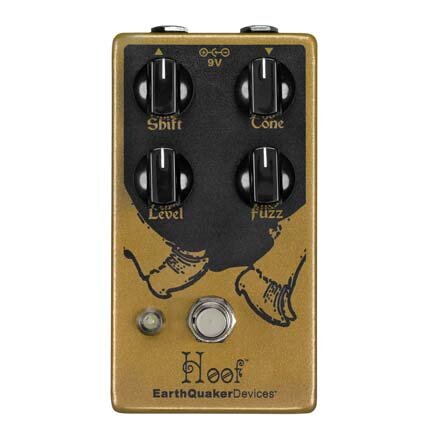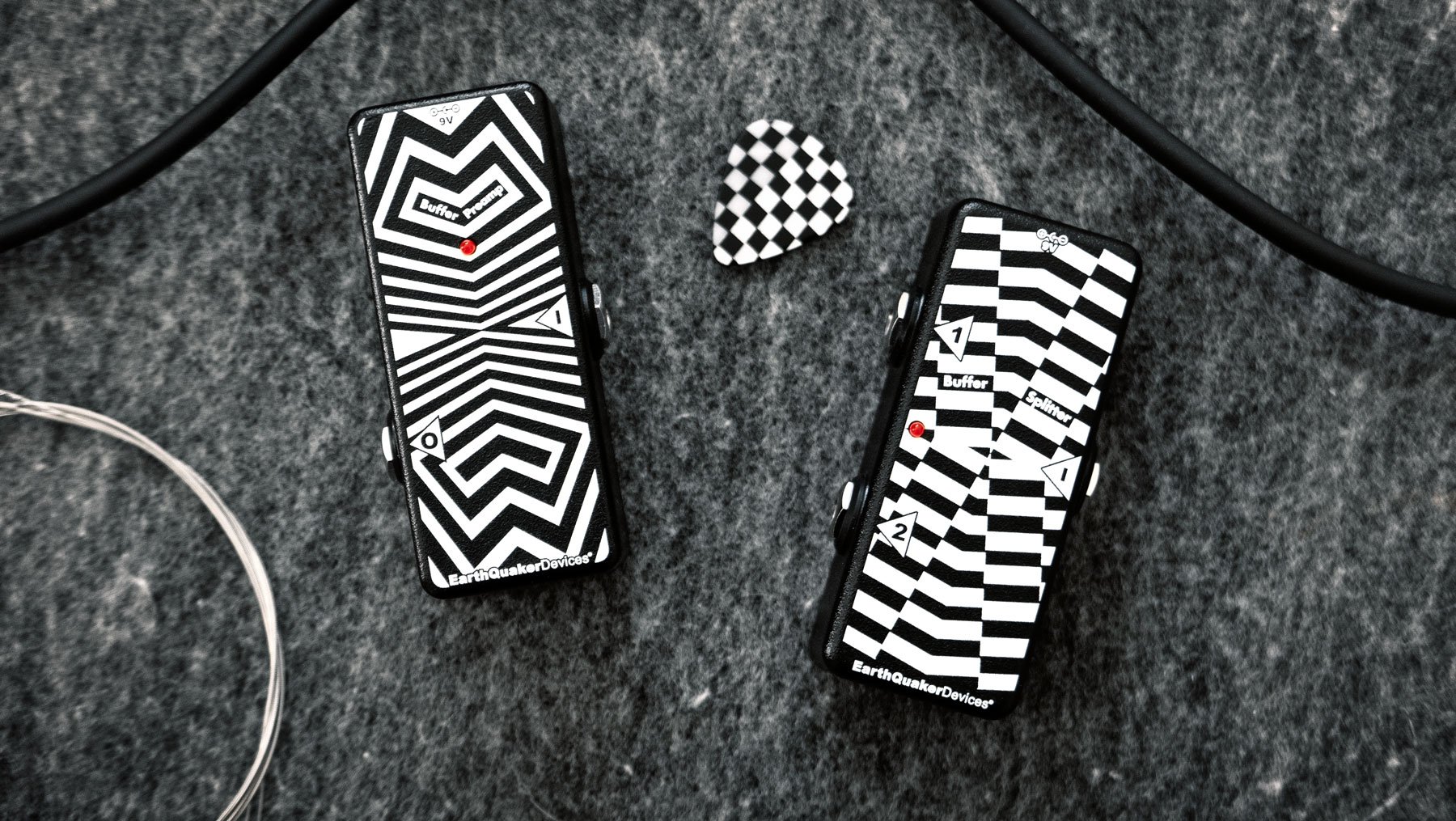TechKnow : Ask A Tech Nerd
Malcolm X Abram
You asked, he answered and now you lucky pedalheads shall receive some expert tech advice from EQD’s beloved tech blogger Lane Sparber, a.k.a Mr. TechKnow.
As you will soon discover, Lane’s knowledge base is both deep and wide and runs the gamut from all things guitars and bass to wiring, repairs, amps, pedals and even a dash of infectious diseases. All in service to you, dear readers and to make the world a better sounding place. OK! Let’s learn!
@nedmorse: What happens when a pedal that has a JFET early in the circuit is placed after an always-on pedal such as a buffer? Should a pedal with a high z input be fed only with a high z signal or is low z into high z fine?
LS: This is an excellent question and there are a lot of variables at play here. Speaking in the most GENERAL of scenarios, high impedance signals tend to get “loaded down” when plugged into a low impedance input stage. For this reason, most effect pedals have a high impedance input and a low impedance output. Some pedals even have a low impedance buffer that’s always on - even in bypass - which insures your signal will be much more robust as it makes its way to your amp.
Historically, the most infamous impedance mismatch is the classic wah pedal into Fuzz Face issue, as the high impedance wah output is severely loaded down by the low impedance fuzz input, leading to oscillation and tone-sucking. If a high-to-low impedance buffer is placed between them, this problem tends to go away (an easy solution is to place any BOSS pedal between them, as almost any BOSS compact pedal employs a low impedance output buffer - even in bypass. Pedals like this are extremely useful and handy tools for impedance conversions).
TOO LONG/DIDN’T READ: low impedance into high impedance is usually fine. High impedance into low impedance isn’t.
@slewthesnotcowboy: How can I replace my volume knob with a kill switch?
LS: There are many methods and hardware options available for this. The solution depends on your personal preferences such as what kind of switch you want and what kind of guitar you have. I plan on devoting an entire future blog post to kill switches and their implementation, but in the meantime let me know what guitar you have and what type of switch you want (lever or push button) and I can guide you through the process if you’re handy with a soldering iron.
@normanwoolsey3: Is a mod possible that allows a bias control on my Hoof like the Dirt Transmitter used to have? I’m comfortable drilling the enclosure and soldering. I know there’s room for a pot in there...
LS: This is possible in theory, but in order to implement it in the best way, I’d need the schematic, which I do not possess. Try contacting EarthQuaker directly.
EQD Repair Guy Joe Golden: It’s much easier to get a “starved” vibe out of the normal feedback network of a 2 stage fuzz (Fuzz Face, Dirt Transmitter, etc.) By adding variable resistance to the collector/emitter (NPN/PNP) of the circuit. When it comes to a Hoof, we are talking 4 stages input/clipper1/clipper2/tone recovery. So, it’s set up to be gainy and sustainy through almost all settings of controls. I don’t have a distinct mod in mind, but tweaking bias in each stage could be tried with the best results revealed upon trying the concept in different sections. It’s like putting a governor on a Maserati. The 4 stages are set up to give some fuzz no matter where the fuzz/dirt/drive control is set. Vague, but my 2 cents.
EQD Founder, President, Jamie Stillman: That’s a good assessment. All of the cool results from adjusting the bias of a fuzz face style circuit are created from the simplicity and downfalls of the circuit. The low input impedance, high input gain and feedback path are all varied by adjusting the voltage on the collector. The Big Muff is designed to be ultra stable, all 4 stages have their own bias network and are set up to add a little more gain in each stage. The distortion is mainly created by the diodes in the middle two sections. You’d have to alter several points at once to achieve the same effect. That said, adding a small value pot wired in series with the power input may have a somewhat similar effect to a Fuzz Face bias control but I think it would have a small range of usefulness. I believe it would result in lowering the gain until it just shuts off but I’ve never tried it so I can’t confirm.
I see that EHX has a bias control on their Germanium Big Muff but I’m not sure what the circuit is. I’m guessing it’s not the typical topology but I’m not positive
@Joe Morana: What does it mean when the band says my bass playing sounds like I broke my fingers?
LS: In my experience, this just means that you’re doing it right. Ignore the haters and keep on being you! Eventually they’ll come around to your...ahem...”style.”
James Belvoir: Why do different pedals require different voltages? Specifically, why does my Polychorus demand its own special 24v PSU while everything else runs nicely from the power brick?
LS: There’s no one-size-fits-all answer for this. Sometimes the internal devices in the pedal require higher voltages to operate; many vintage pedals using older transistors/ic’s have this issue. Sometimes higher voltages are needed for more “headroom” or cleaner operation, or to operate the internal devices at an ideal point for that specific circuit’s needs. Additionally, any pedal with a vacuum tube will need its own separate power supply to source the much higher current needs of the vacuum tube(s).
So, as you can see, it all depends.
@terryallancole: I love the tone boost of The Warden compressor but the level and sustain makes my whole rig hum something loud. Any way to kill the hum without using a noise suppressor cutting sustain and volume?
A compressor is by nature a noisy effect. It’s job is to make all signal levels the same amplitude by selectively squashing loud signals and amplifying weaker ones. Unfortunately, this also means that “weaker” noises like hum, hiss, and crackle get amplified too. I know. It’s annoying, but your compressor is just doing it’s thing. The heavier the amount of compression you use, the worse this phenomenon gets.
The best way I’ve found to combat this is to make sure everything in FRONT of the compressor is as silent as possible. Use the quietest cables you can. Make sure your guitars are shielded inside. Make sure everything is grounded properly. Do all of this because what goes into a compressor like a lamb often comes out of it like a lion (depending on your settings, of course).
@dan_simon77: My Strymon Flint will now only pass bypassed signal thru one output (both outputs only work with reverb on) & the trem effect isn't working right. On '65 photo setting with high intensity it should have holes of silence (100% on/ off tremolo) but doesn't.
LS: Strymon has EXCELLENT customer service, and they don’t give out schematics (to my knowledge). Reach out to them directly and I’m sure they’ll take care of you.
George Sudbery: Can you get into the details about how fuzz and other pedals are affected by buffered bypass vs. true bypass? Is it the general rule of thumb to always have fuzzes and envelope controlled pedals right up front?
LS: In bypass, none of it matters, as your signal is either going directly through the pedal (if it’s true bypass, meaning that your signal remains high impedance out of the pedal if you have passive pickups) or through the pedals’ bypass output buffers if applicable (your output signal is almost always low impedance in this scenario).
For more detailed information on wah pedal into Fuzz Face shenanigans, see my response to nedmorse’s question on JFET input stages above.
@mikestearns1: Would you rather be a giant head with a foot, or a giant foot with a head?
LS: This question boils down to an interesting dichotomy between mobility versus intellect. I value knowledge over travel or the ability to hop around easily, so I’m going with a giant head with a foot. Plus, having a normal sized foot makes buying a shoe and sock much easier, as I can easily get by without a hat on my now giant noggin.
Justin Young: Why doesn’t my (Fender) Tweed Champ pass signal?
LS: There can be myriad reasons for this, and I’d need the amp in front of me to run tests and diagnose the problem. The most common causes are the tubes going bad, which may or may not have also blown the fuse.
Michael Rae: EarthQuaker Devices' Park Fuzz into a Vox AC15HW: Which speaker would be best, a Celestial Greenback or an AlNiCo Blue?
LS: This question is completely subjective, as what sounds “best” is in the ear of the beholder. That said, since you asked for MY preference, I’d go with the AlNiCo Blue. Why? Well, to my ears, the blues have a slightly more “scooped” midrange character that I love. AlNiCo blues are also an integral part of THE sound of Vox AC15s and AC30s. Don’t get me wrong...the bark and upper midrange bite of the Greenbacks are awesome too, especially for lead work. There’s no wrong answer here. There are many sound clips online that can help you make an informed choice that’s right for you.
@whorseband: Why do birds suddenly appear every time I’m near?
LS: Uh-oh.
I hate to give you bad news publicly over the internet, but this is usually the first symptom of acute richardkarencarpentitis. This is a rare degenerative disease that targets and causes severe inflammation of the 70s soft-rock neurotransmitter receptors in the brain. It starts with mild, innocuous symptoms such as the appearance of your avian friends when you’re close to certain objects. However if left unchecked, it usually progresses to more troubling and advanced symptoms. These symptoms can include - but are not limited to - the uncontrollable desire to be close to people (this can get awkward fast, and can even get you arrested), irrational phobias regarding rainy days and/or Mondays, and a feeling that you’ve only just begun a task (regardless of what stage of said task you’re actually in).
I STRONGLY suggest you seek medical attention before your closet is full of powdered blue leisure suits with navy piping, tuxedos with comically large bow ties, and button down shirt/crocheted sweater sets with collars the size of Nevada.
*********************************************
Follow @earthquakerdev on Instagram to submit questions for the next TechKnow with Lane Sparber.
Malcolm X Abram is a recovering reporter and music writer and a proud 40 year guitar noodler. He lives, works and plays in the bucolic dreamland of Akron, Ohio in an old house with two dogs who don’t really like each other and way too many spiders.







